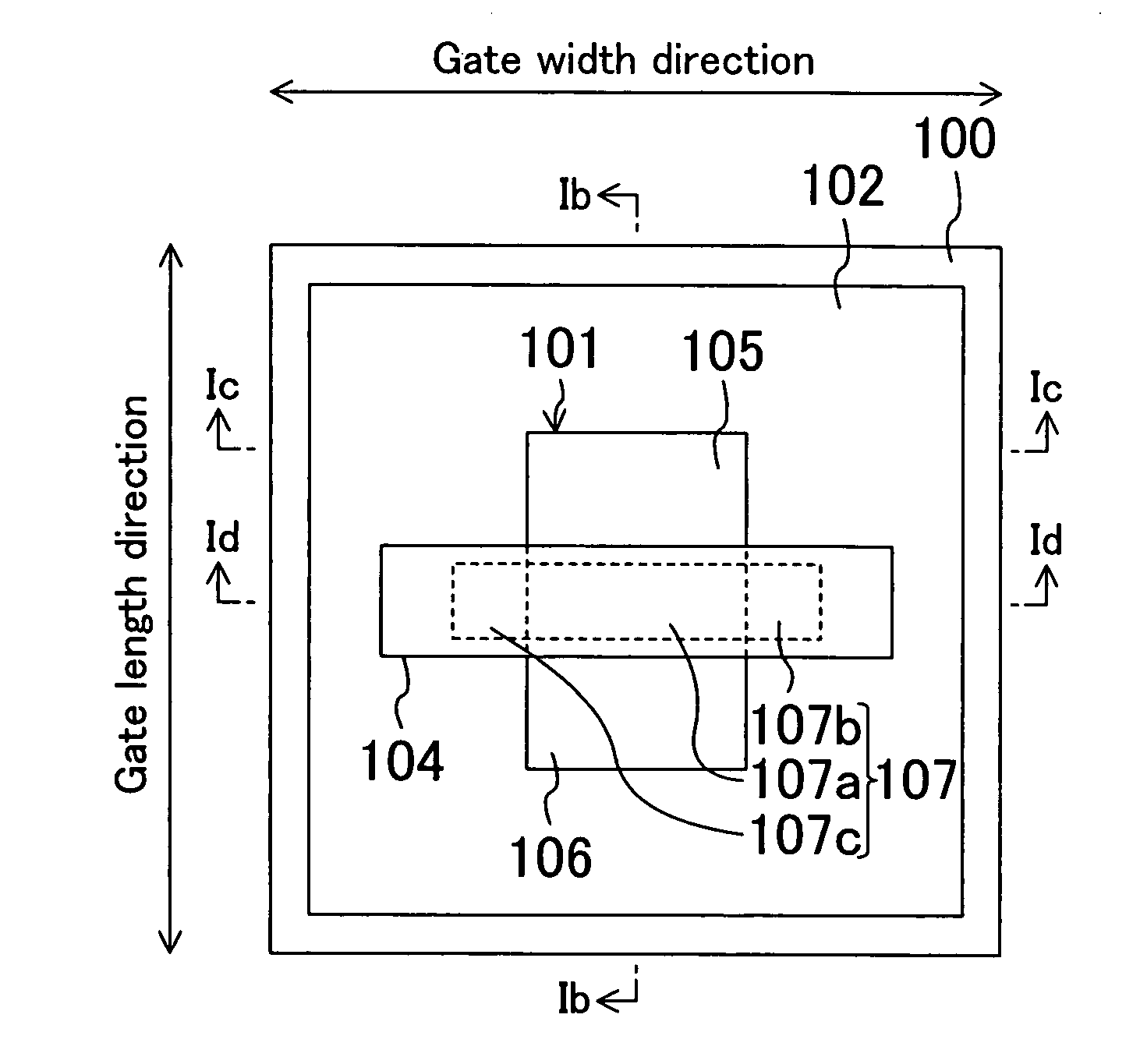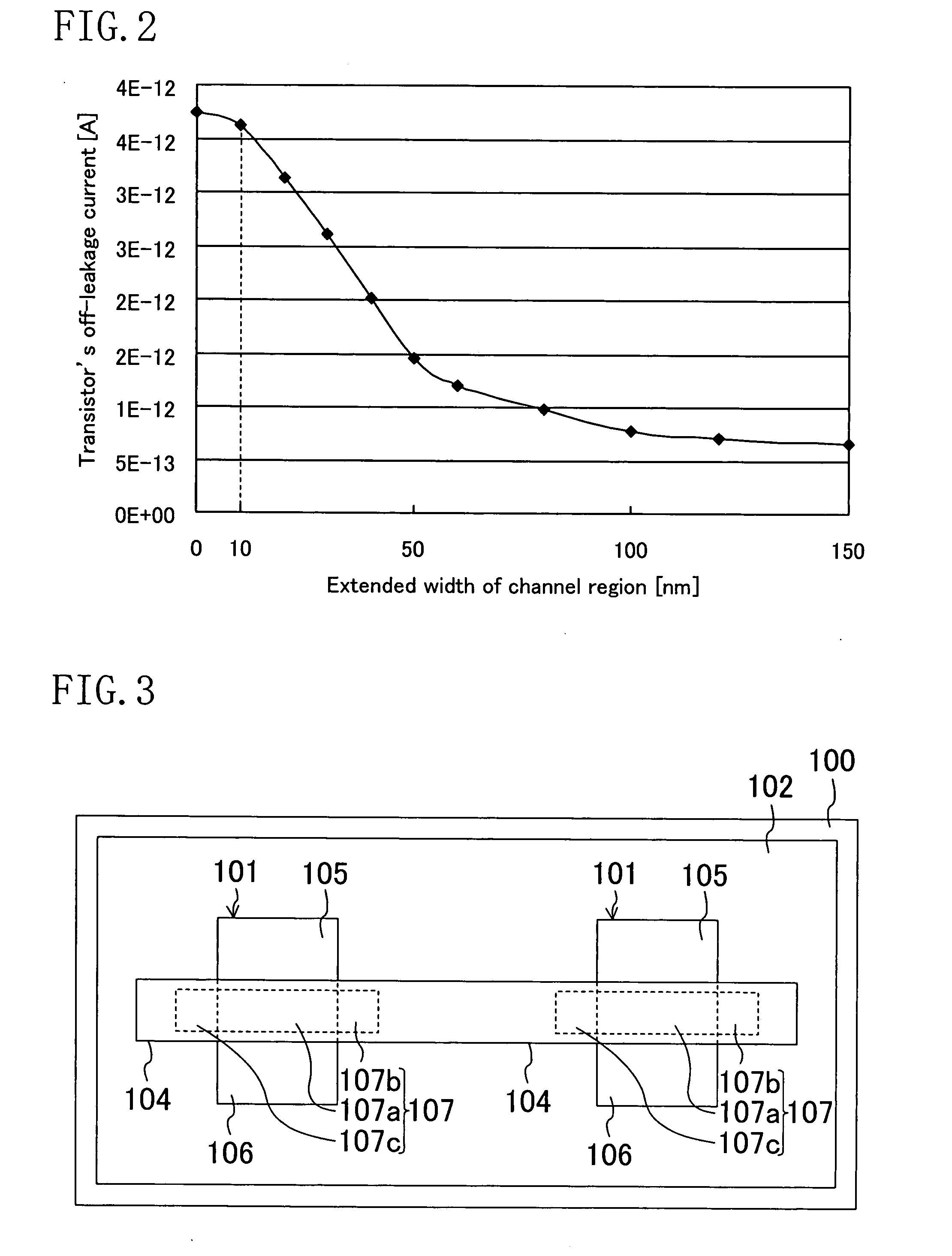Semiconductor device
a technology of semiconductors and devices, applied in the direction of semiconductor devices, transistors, electrical apparatus, etc., can solve the problems of reducing the impurity concentration in the vicinity of the sti, affecting the accuracy of the microscopic region, so as to suppress the characteristic of the hump
- Summary
- Abstract
- Description
- Claims
- Application Information
AI Technical Summary
Benefits of technology
Problems solved by technology
Method used
Image
Examples
first embodiment
[0032]FIG. 1A is a plan view illustrating a semiconductor device according to a first embodiment of the present invention. FIGS. 1B, 1C, and 1D are cross-sectional views of the semiconductor device taken along the lines Ib-Ib, Ic-Ic, and Id-Id, respectively, in FIG. 1A.
[0033]The semiconductor device includes a semiconductor substrate 100, a device active portion 101, a device isolation portion 102, a gate insulating film 103, and a gate electrode 104.
[0034]The device active portion 101 is formed in the principal surface of the semiconductor substrate 100. The device isolation portion 102, which is a STI (shallow trench isolation), for example, is formed in the principal surface of the semiconductor substrate 100 so as to surround the periphery of the device active portion 101. The gate electrode 104 is stacked over the device active portion 101 with the gate insulating film 103 interposed therebetween.
[0035]The device active portion 101 includes a source region 105, a drain region 1...
PUM
 Login to View More
Login to View More Abstract
Description
Claims
Application Information
 Login to View More
Login to View More - R&D
- Intellectual Property
- Life Sciences
- Materials
- Tech Scout
- Unparalleled Data Quality
- Higher Quality Content
- 60% Fewer Hallucinations
Browse by: Latest US Patents, China's latest patents, Technical Efficacy Thesaurus, Application Domain, Technology Topic, Popular Technical Reports.
© 2025 PatSnap. All rights reserved.Legal|Privacy policy|Modern Slavery Act Transparency Statement|Sitemap|About US| Contact US: help@patsnap.com



